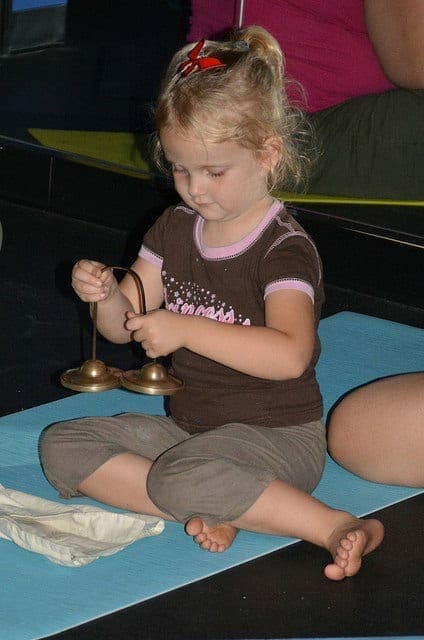When you hear a bell ringing, you are listening to energy making a journey. -Sarah Schain
Sound is an important part of the human experience. Just think about how music makes you feel! Songs, their melodies and rhythm, their patterns and harmonies can make us get up and dance joyfully or sit quietly and feel pain.

As far back as the 17th century, scientists noticed that objects tend to begin synchronistic movements based on sound. Two pendulums placed next to each other eventually start swinging at the same tempo. Don’t believe me? Check out this video of 32 pendulums syncing up all on their own. Amazing, right?
So obviously sound waves have power, and water is an ideal carrier of sound vibrations. When you strike a chime or a gong, the air surrounding the chime also vibrates. The vibrations spread quickly through our bodies, which are more than 80% water and this results in a very delicate massage of internal organs and even cells. Your body is literally bathed in the sound waves.
Harness that power, that universal energy, and use it to create an experience that will resonate with your kids long after the sound disappears.
- Tibetan singing bowls are said to recreate the universal original harmonic frequency and stimulate the body to rediscover its own organic vibration. When exposed to the powerful vibrations of a singing bowl, the body is able to retune itself to its original, healthy frequency. This makes us feel more settled and calm. Tibetan singing bowls are easily purchased online and come in a variety of sizes and corresponding tones. You can also purchase singing bowl songs to use in class. Invite children to listen for the sound that seems furthest away and follow
that tone until it disappears. When their chosen sound is gone, they choose another tone to follow. This keeps them focused, with their thoughts filtered out by the sound. Play the bowls (or the recorded bowl sounds) fairly loudly to recreate the strong vibrations. You can even place the bowls and the children’s bellies when you play them for an immediate recognition of the vibrations.
- If you have access to a gong, your kids are in for a beautiful, relaxing treat. There’s something magical about a gong’s vibrations that just wash over and through your body. Have children come into Corpse pose (simply lying flat on their backs, eyes closed) and begin to gently play the gong. At first, the sound may be overwhelming or strange to them. But eventually, the vibrations help the children calm down and even drift to sleep. If you don’t have a gong, you can find gong sounds on YouTube. Like the Tibetan singing bowls, you’ll want the volume to be fairly loud to create strong sound waves.
- Try a walking meditation with little jingle bells! Give each child a jingle bell (or 2 if you have enough) to hold with their toes. Then, very slowly, begin to walk. You want to be so careful, so mindful and smooth, that you don’t hear any jingles at all. I like to tell my kids to pretend they are walking in slow-motion on the moon. Make it a partner activity by having one child walk silently with a bell to their partner across the room. When they arrive, they jingle the bell and pass it to their partner to walk back without noise.
- A great way to practice mindful listening is to use tingsha bells
. Tingsha bells are like tiny cymbals joined by a leather strap that, when struck, produce a lovely lingering tone. Have children sit up tall on the floor (or in their chairs if practicing at school), eyes closed, palms up on their laps. Tell them their palms are going to act as extra ears, sensitive to sound waves (a science lesson, too!). Ring the tingsha once and as long as they hear the sound, their palms remain up. When they no longer hear the tone, they turn their palms down. Try this a couple of times. Then, you can use it to quiet the kids throughout the school day. When they hear the chime, they turn on their super sensitive ears and listen for the end of the chime. Don’t have a tingsha bell? Any chime or bell can work.
Like what you read here? There’s so much MORE to explore and learn with Kidding Around Yoga. Check out our website for our live and online teacher trainings, Yoga Alliance-approved 95-hour RCYT trainings, specialty online courses, original music, merchandise, and beyond! KAY even offers an online course designed to give you a strong foundation in understanding diversity and inclusivity which will help you make your teaching space a safe and welcome place for ALL: KAY4All.

 that tone until it disappears. When their chosen sound is gone, they choose another tone to follow. This keeps them focused, with their thoughts filtered out by the sound. Play the bowls (or the
that tone until it disappears. When their chosen sound is gone, they choose another tone to follow. This keeps them focused, with their thoughts filtered out by the sound. Play the bowls (or the 

